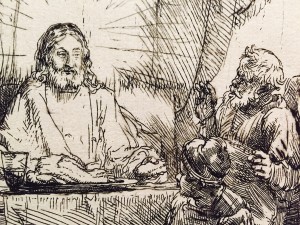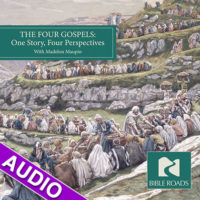As you study Jesus’ parables’, it becomes obvious quickly how important the Sower and the Seed story is, one of the few to appear in all three synoptic Gospels. (John’s Gospel doesn’t contain any parables.)
But even more noticeable is that the Sower and the Seed story leads the rest, in Matthew (Matt. 13:3-17), Mark (Mark 4:1-9) and Luke (Luke 8:4-8) where the majority of them cluster. There should be bells and whistles dinging somewhere for us right now, prompting questions. Why is this parable so significant that it leads the rest? What are the three Gospel writers trying to tell us by such placement?
First, we know the parable tells of four states of soil, or thought, that have various challenges for the seed to truly take root and grow. Only in the fourth are the conditions of soil and cultivation right for a harvest. Jesus tells the parable to a crowd but then goes through an explanation of what it means or how to interpret it.
By looking at what is before and after the parable, Mark’s text sheds further light. Recall that Mark often likes to bracket his material with relevant teachings both before and after a story. For the Sower and Seed parable, this ‘sandwich’ affect offers new insights.
Mark 3:31-35 sets up the story of The Sower and the Seed:
31 Then his mother and his brothers came; and standing outside, they sent to him and called him. 32 A crowd was sitting around him; and they said to him, “Your mother and your brothers and sisters are outside, asking for you.” 33 And he replied, “Who are my mother and my brothers?” 34 And looking at those who sat around him, he said, “Here are my mother and my brothers! 35 Whoever does the will of God is my brother and sister and mother.”
This seems a bit harsh — Jesus referring to his family as being outside, literally and figuratively. After the parable appears as the middle portion (Mark 4:1-9), there follows a final section of material which returns to the theme of outsiders (Mark 4:10-12):
11 And he said to them (the disciples), “To you has been given the secret of the kingdom of God, but for those outside, everything comes in parables.”
First the outsiders are his family and later, the crowds (as distinct from his disciples). Is the placement of the parable, both in this ‘sandwich’ position as well first in the line up of other parables, telling us that spiritual receptivity is the first qualification of those who truly follow Jesus? And that such receptivity qualifies them to be his true followers, or insiders? What a blow to all those theories about social hierarchy, positioning, power, etc.!
If we want to be a true follower, an insider (in Mark’s language), then spiritual receptivity is our only measure. The parable explains how all the problems arise when the seed, or Word of God, doesn’t have the proper soil, care and cultivation–when individuals don’t truly follow the Master in word and deed. But when those conditions do exist, the seed is planted, grows and produces a bountiful harvest.
Likewise, those outsiders are similar to the first three of conditions that choke the seed or prevent productivity and high yield, lives rich in giving and receiving blessings. By not yielding to ‘the will of God’–the way Jesus defines his family in the above passage–our ‘soil’ won’t be sufficient to produce a harvest.
Jesus confirms the need for spiritually receptive, hungry hearts when he quotes Isaiah 6:9-10 in the explanation of the parables’ meaning, reminding us that Israel didn’t listen to her prophets:
they may indeed look, but not perceive,
and may indeed listen, but not understand;
so that they may not turn again and be forgiven.’” (Mark 4:12)
Now we see why the sower and the seed parable must be first in the line up, informing us it is how we receive the message of the Kingdom, an idea first introduced in Isa. 6, that counts. By quoting the Hebrew prophet that preceded him, is Jesus wondering if events are going to be different 600 years later in his day?
The warning that launches here, of hardness of heart and deafness to the message, is repeated again and again throughout the Gospels. Since their intent is to bring about good discipleship – let us be sure our soil is ready for that incomparable seed!
(For more on the parables, you might enjoy this earlier blog if you missed it.)




